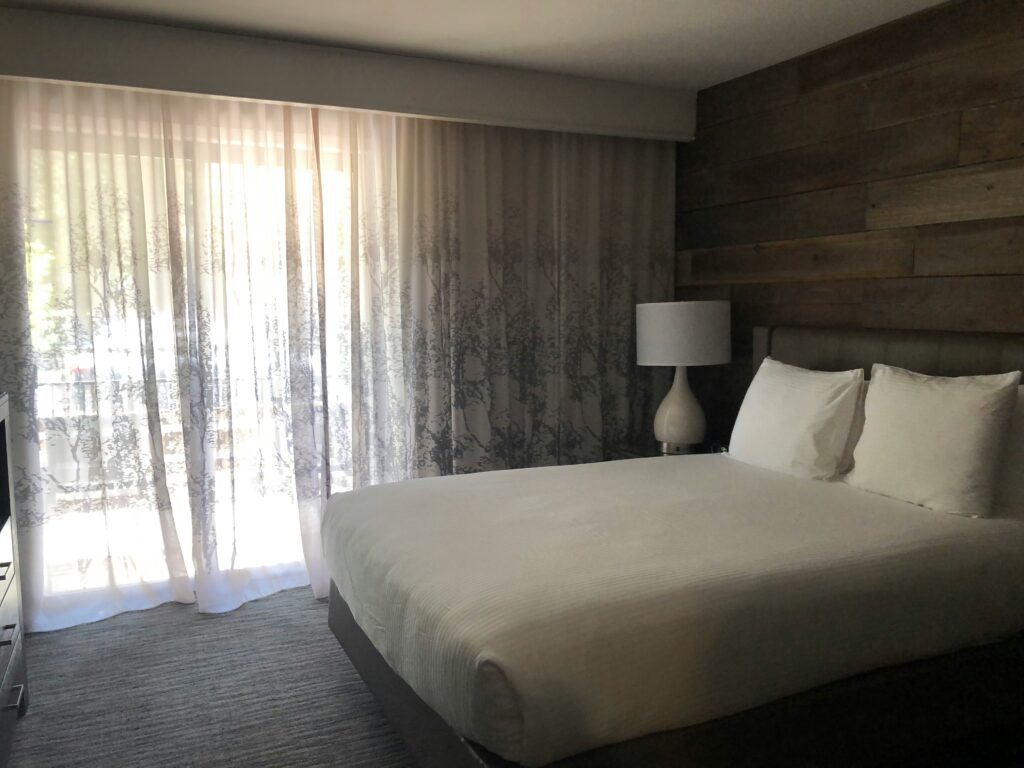Wheelchair Accessible Hotel Design: How Innovations Are Transforming Hospitality for Guests with Mobility Challenges
Traveling with a mobility issue has long come with unnecessary obstacles. For guests who use wheelchairs, walkers, or other assistive devices, hotel stays can be more stressful than restful. For hotel owners and designers, this represents both a challenge and an opportunity to elevate the hospitality experience by creating environments that are inclusive, comfortable, and dignified for all guests. As accessibility awareness grows and expectations around wheelchair accessible hotel design evolve, modern accommodations must move beyond minimum compliance to embrace innovation, flexibility, and true inclusivity.
Rethinking Hotel Design for Accessibility and Comfort
The foundation of an accessible hotel lies in how the space is built and arranged. While ADA standards provide a baseline, forward-thinking hotels are raising the bar. The goal is no longer just compliance. It is about offering a better experience for all guests and making properties more attractive to a broader market.
Thoughtful design not only supports individuals with disabilities but also enhances usability for older travelers, families with strollers, and others with temporary or situational mobility limitations. The return on investment encompasses increased guest satisfaction, stronger brand loyalty, and an enhanced reputation.

Key Elements of Wheelchair Accessible Hotel Design
Designing a hotel that is genuinely accessible means moving beyond basic compliance. It requires a thoughtful approach to layout, furniture, amenities, and how guests interact with the space. The following elements play a vital role in creating an environment that supports safety, independence, and comfort for travelers with mobility challenges.
Step-Free Access and Open Layouts
Unobstructed pathways, automatic doors, and smooth level flooring are essential. These features eliminate physical barriers, allowing guests using mobility devices to navigate lobbies, common areas, and hallways comfortably and independently.
Accessible Guest Room Features
Well-designed accessible rooms include roll-in showers with folding benches, grab bars, handheld showerheads, and easy-to-reach outlets and switches. Adjustable-height beds and under-bed clearance accommodate lift devices. These features are not just functional. They also signal care and attention to every guest’s comfort and autonomy.
Adjustable Furniture and Flexible Fixtures
Movable furniture, motorized curtains, and adjustable desks allow guests to personalize their space. For individuals with limited mobility, even minor adaptations can significantly improve their experience.
Innovative Technology Enhancing Accessibility
Technology continues to reshape the hospitality experience, making it easier and more intuitive for guests with mobility challenges to navigate their stay. From voice-activated controls to touchless entry, these modern tools offer greater independence, convenience, and comfort throughout the hotel environment.
Voice-Controlled and Mobile Room Features
Hands-free control of lights, thermostats, and entertainment systems through smart assistants empowers guests who may have limited dexterity. Mobile apps allow guests to adjust room settings, request services, or access hotel information without needing to reach switches or speak directly to staff.
Touchless and Keyless Entry Systems
Smart locks and elevator-linked keyless access remove common physical barriers, making it easier and more dignified to enter rooms or navigate between floors.
Accessibility Beyond Guest Rooms
True accessibility means that guests using wheelchairs can move through every part of the hotel with ease and dignity. From recreational spaces to dining areas and transportation services, thoughtful design and accommodations throughout the entire property ensure an inclusive and respectful experience for all.
Inclusive Pool and Fitness Amenities
Zero-entry pool designs, pool lifts, and adaptive fitness equipment ensure guests with mobility limitations can enjoy wellness spaces alongside others without restriction.
Wayfinding and Navigation Tools
Indoor navigation apps and beacon technology offer real-time guidance, helping guests locate elevators, exits, dining areas, or their rooms. These systems support guests with visual, cognitive, or mobility challenges, creating a more autonomous experience.
Arrival and Transportation Services
Accessible shuttle services, modified drop-off zones, and adequately trained valet staff make a strong first impression. These features reflect a hotel’s overall commitment to inclusion, ensuring every guest feels respected from the moment they arrive.

The Human Element: Inclusive Service Culture
No matter how advanced the design or technology, hotel staff are the frontline of the guest experience. Employees trained in disability awareness and inclusive service practices can anticipate needs without overstepping, creating a sense of comfort and confidence for every traveler.
Best practices include:
- Greeting guests at eye level
- Asking before offering assistance
- Clearly explaining accessible options at check-in
- Respecting guest preferences and privacy
A culture of empathy and attentiveness can be the difference between a guest choosing your hotel again or not.
Final Thoughts
Hotel owners and designers have a unique responsibility and a significant opportunity to reimagine hospitality through the lens of accessibility. Modern guests expect more than just compliance. They seek spaces that make them feel seen, valued, and welcome.
Investing in accessible features is not only the right thing to do, but it is also the responsible thing to do. It is a wise business decision. By adopting inclusive design, leveraging innovative technology, and training compassionate staff, your property can stand out as a leader in a rapidly evolving industry.


